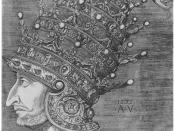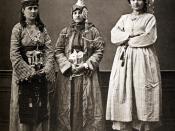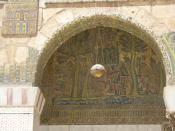Gabriela Salazar December 11, 2013
Professor Yunus Tuncel Objects as History The Damascus Room at the MET Final Paper
The Damascus Room
Metropolitan Museum of Art
Founded in the 3rd millennium B.C, Damascus, commonly known as ash-Sham or the City of Jasmine, is the capital and second largest city of Syria. This city is one of the oldest continuously inhabited cities of the world and is known as a major cultural, religious and commercial center due to its geographical position at the crossroads of the east and west, between Africa and Asia. Besides Islam's influence, traces of Roman and Byzantine cultures are present in this city. Another influential aspect in the history of Damascus is the Ottoman period, which was ruled by Suleiman the Magnificent who absorbed a great amount of Syrian territory into his Turkish Empire.
Damascus is nowadays based on Roman architecture with all its streets oriented north-south and east-west which serves as a clear example of urban planning.
Lying at about 80 km inland from the Mediterranean, sheltered by the Anti-Lebanon Mountains and 680 meters above sea level, this city is home for over 2.6 million people.
The ancient rooms from Damascus, which in fact are the earliest surviving damascene interiors, have made a great impact on this city's history given its highly pleasing aesthetic and its alloy of cultures. Wealthy Damascene homeowners periodically refurbished reception rooms in accordance with shifting trends and tastes in interior decoration. This is why houses in the old city of Damascus along with their interiors rarely date to a single building phase.
The reception rooms were used by the owners to "show off" in some sort their wealth, by putting books on the shelves to show their knowledge, writing on the wall to show their culture and religion and ceramics and...


